How We Ride the GDMBR
Established in 1998 by Adventure Cycling’s Mac McCoy, the Great Divide Mountain Bike Route was the first cross-country bicycle route of its kind, following dirt roads and trails along the U.S. and Canadian Continental Divide. In its 20+ years, the route has crossed into the realm of icon and bucket list for many long-distance adventurers — for good reason.
This route is defined by the word remote. Its remoteness equates with spectacular terrain and scenery. The entire route is dirt-road and mountain-pass riding, with 213,035 of climbing. The diverse nature of the route’s five regions makes for an incredibly visual, sometimes spiritual experience.
In considering the 3087.5-mile route from Jasper, Alberta, Canada, to Antelope Wells, New Mexico in the U.S., most riders begin with a few basic questions. Do I ride the entire route or just sections? Is it safe to go alone? What sort of bike do I need? It can feel daunting to prepare for such a journey, and each person prepares and experiences the route differently.
To help you discover the type of Great Divide adventure that’s right for you, Alissa Bell of Exploring Wild helped us gather a variety of 2021 Great Divide riders to share the decisions they made and their experiences on the route. Their answers to basic questions are enlightening and often surprising. So while this article is long, it’s flush with helpful details — everything from packing lists to the number of days on the trail.
Our riders came from all walks of life, from experienced cyclists to first-time adventurers. Some rode alone and others in groups. A dirt-chasing cyclist, Pak is making a film about his adventure called Riding Han. Type-2 fun adventure buddies Irena and Sarah kept a blog, as did Deb and Tom Gardner, a newly retired couple in their early 60s. A first-time bikepacker and freshly graduated Master’s student, Mia shared her story of riding the GDMBR alone on Instagram. Experience adventurer Alissa Bell creates helpful how-tos based on her experience for Exploring Wild and for Adventure Cyclist online. And Scott, a 55-year-old athlete from Ohio, loved the route so much that he’s racing the Tour Divide in 2022. Every person interviewed rode the entire U.S. portion of the GDMBR in 2021 while pandemic border restrictions were still in place. Only Alissa was able to ride in Canada.
Their answers have been edited for brevity but know that each rider resoundingly felt the joy and compassion of trail angels, strangers, fellow riders, and everyone they encountered. Their main advice was “just do it!” And each felt that magic happened when you least expected it.
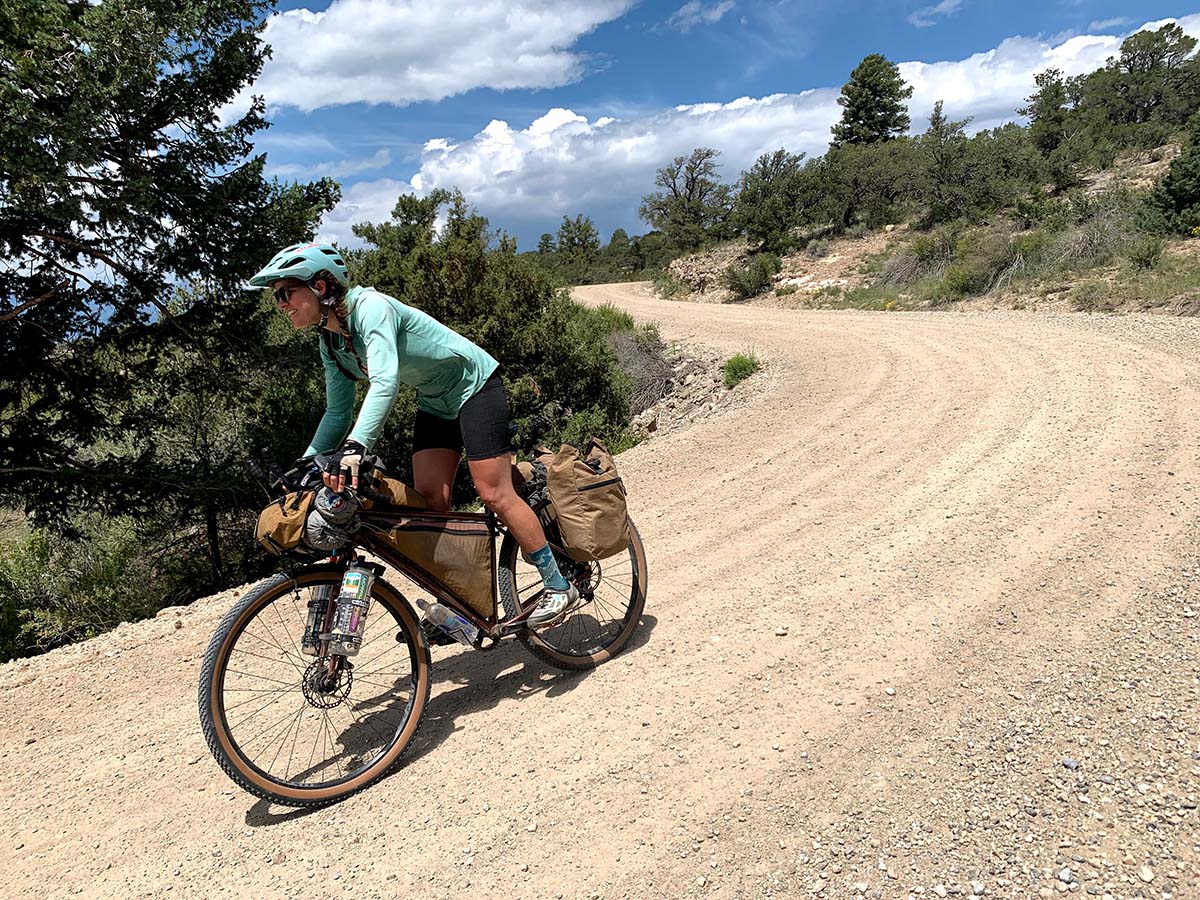
Why the Great Divide Mountain Bike Route?
Pak: I decided that when I turned thirty I would take my little brother on an epic bicycle journey. Never would have I guessed that it would be during a pandemic.
Alissa: The isolation of the pandemic left me craving more connection and community in my riding than I usually choose. I wanted to feel the presence of other Divide riders both current and past, to see their tire tracks in the dirt and experience the places I’d read about in their ride reports, and to meet locals who understood why I was passing through their town.
Irena & Sarah: In late 2017, shortly after Irena’s cross-Canada trip, she mentioned to Sarah that she had heard of this crazy route following the Continental Divide. Our mental wheels started spinning and soon what started as a big nearly impossible-sounding challenge began to morph into a goal.
Scott: I like to push myself. This was my first bikepacking adventure so epic was the only way to start. I was excited by the camping and seclusion but surprised by the people I met along the way. They were so great that they changed my outlook on humanity and bikepacking.
Mia: My partner had done this trip the year before, and I always wanted to do a big outdoor trip on my own — time in solitude, testing my strengths in nature.
Deb & Tom: Doesn’t one life event seem to lead to another? While riding Northern Tier in 2018, we were stopped by a snow squall in Eureka, Montana, and encountered several bikepackers racing the Tour Divide (which uses the Great Divide route). Within a month of returning from our trip, we began to plan our ride on the GDMBR.
Alyssa & Friends: To me, the answer to this question is self-evident. It’s the route. After riding the Idaho Hot Springs Mountain Bike Route in 2020, I watched Lael Wilcox’s “I Just Want to Ride” film about her 2019 Tour Divide FKT attempt. I texted Megan and Stephanie and said, “We’re riding the GDMBR in 2021.” They both text back, “Yep.” That was the entire discussion.
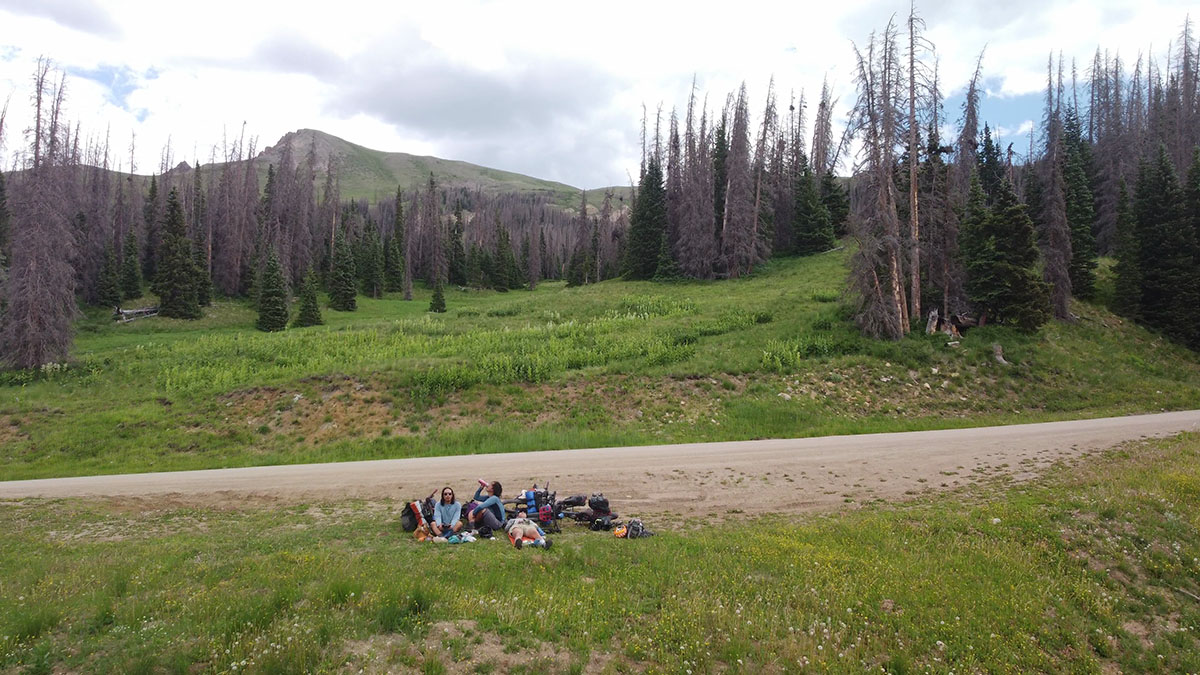
Bike Set Up
Pak: I rode a Crust Evasion that I bought used in 2016 with a mishmash of bikepacking bags from Rogue Panda (created the Korean flag frame bag), Road Runner, Outershell, Randi Jo Fabrications, Rons Bikes Fabio Chest.
Alissa: I rode my rigid steel Salsa Fargo with 29 x 2.3” Continental CrossKing ProTection tires, and thought it worked really well for the route. Special shoutout to my Funn Mamba single-sided SPD pedals with a platform on one side, perfect for extra flexibility on such a long trip. My bags were a motley collection acquired over the years: Revelate seat bag, Salsa frame bag, and handlebar harness, Blackburn Outpost gear cages on the fork, and assorted accessory bags from budget brands Moosetreks and RockBros. I managed to fit everything into a bikepacking-style setup (no rack and no backpack) but it filled every last bit of space on my small frame!
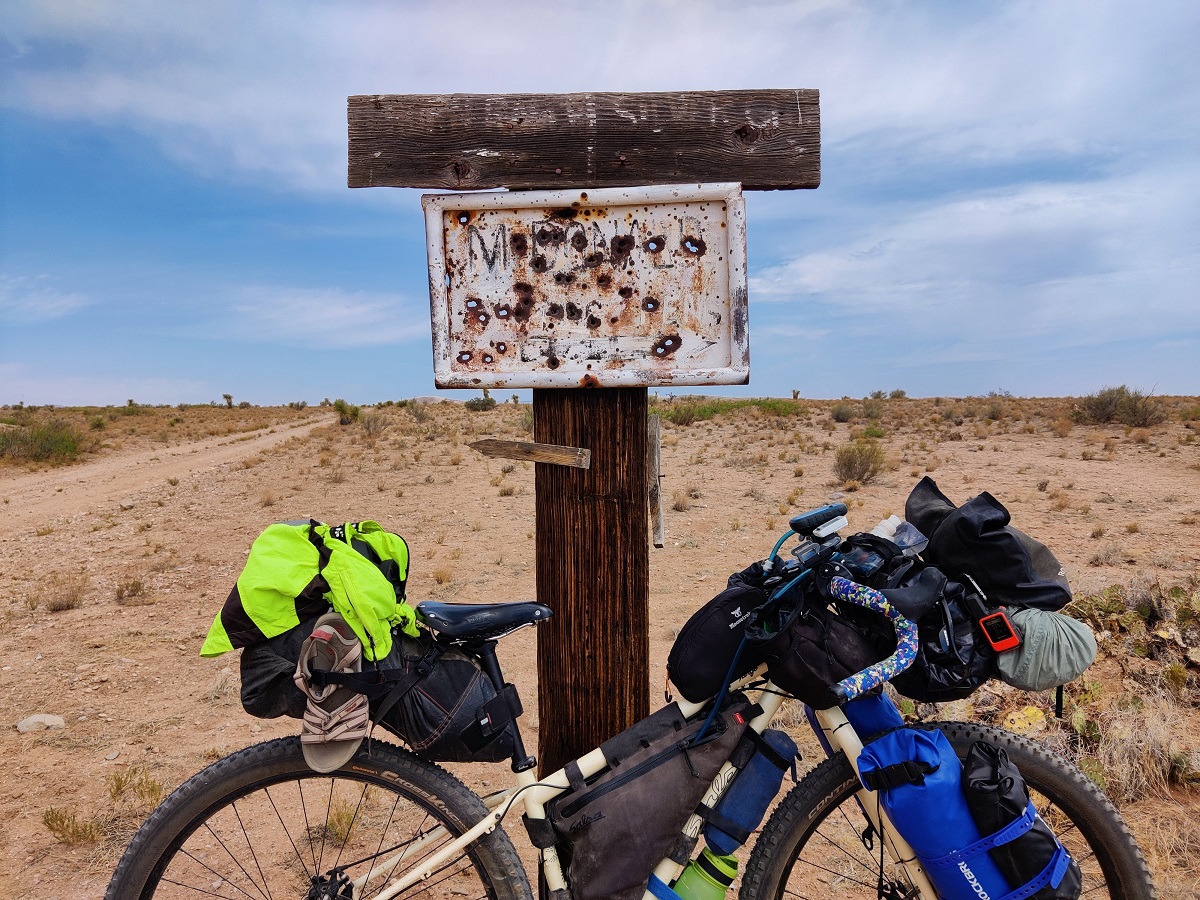
Irena & Sarah: We both rode a 2017 Salsa Fargo with Revelate Designs Mountain Feedbag handlebar bags, Salsa fork bags, and a Salsa frame bag. Irena used a Revelate Designs Spinelock seat bag, and Sarah used Ortlieb Gravel Pack panniers on a rear Salsa rack. Irena also used a Salsa handlebar bag and cradle. Irena’s Fargo has 29” wheels with 2.35” tires and Sarah’s is 27.5+ with 2.8” tires.
Scott: Bike: a 2018 Jamis Renegade Exploit. I have a modified 1×11 38t Wolftooth up front and 11-42 with GRX rear. The wheels are Hunt with Maxxis 47 mm tires and Son dynamo hub powering my Klite system. Bags: Rogue Panda frame bag, Revelate Spinelock seat bag, Revelate MAG 2000, (2) Revelate feed bags, and a Revelate Harness.
Mia: Starting with a used 2018 Salsa Fargo frame, my partner and I built up the drive train, custom painted it, and added other fun parts. The bike is steel so it’s quite rugged, and fortunately, Salsa frames have matching frame bags. Finally and most importantly was the suspension fork. Not many people ride with suspension, and I cannot suggest it enough for this route.
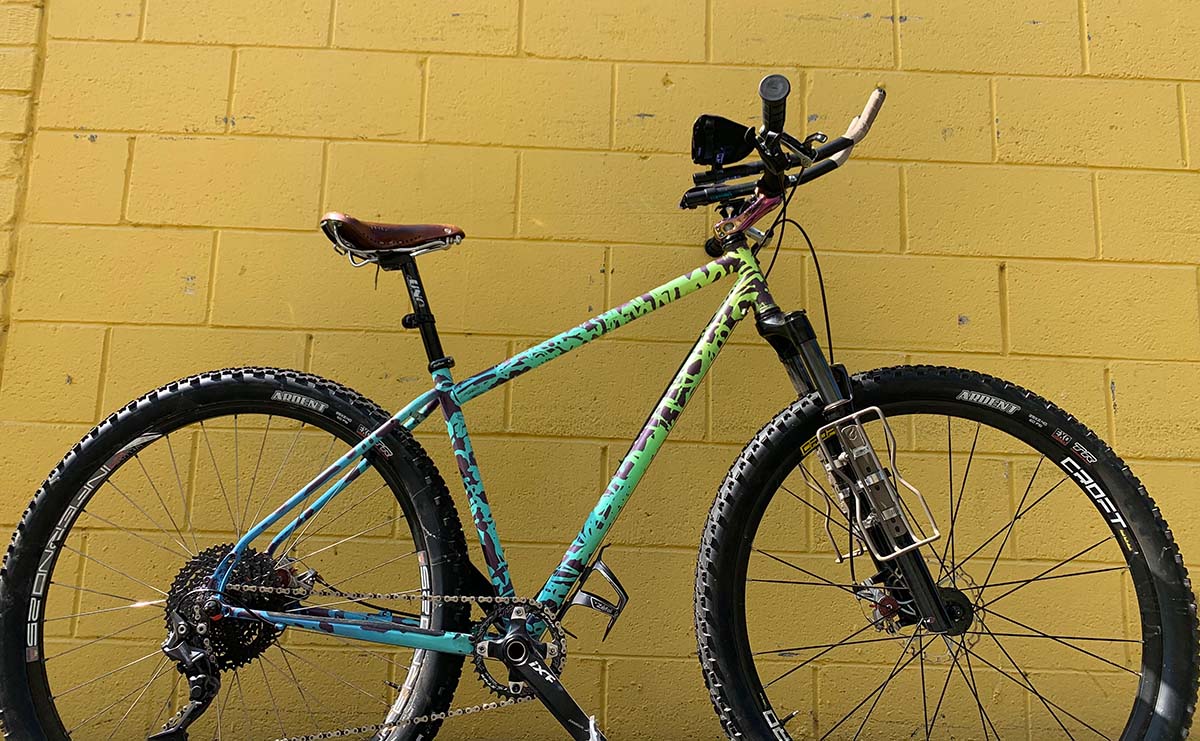
Deb & Tom: We both rode 2019 Salsa Cutthroats on 29” x 2.2” Maxxis tires with a tubeless setup. Both of us carried Revelate frame bags, Terrapin seat bags, sweet rolls, mag tanks, two mountain feedbags each, two Salsa anything cages and bags (one for each fork) each. I also carried an Egress bag.
Alyssa & Friends: I rode my 2014 Soma Double Cross 2×10. We’ve been together through thick and thin for 20,000 miles, but as much as I love my bike I would never endorse it for this purpose — it doesn’t have nearly enough tire clearance. I switched to 650b wheels so that I could maximize my tire width (Rene Herse Juniper Ridge 48mm) but even with 650bs, I had a total of 4mm clearance in my seat stays. Every mechanic who serviced my bike along the route thought I was out of my mind.
Megan was on a Surly ECR 1×12; Stephanie rode a Kona ULTD 1×11.
For bags, I used North Street panniers on a rear rack. I’m handy with a sewing machine so I made a custom frame bag and a handlebar bag to hold my tent. I stored most of my water in oversized Nalgenes on my fork. I was very pleased with the overall weight distribution, with how easy my gear was to pack up every morning, and with how quickly I was able to access things I needed during the day. I wouldn’t do anything differently. I converted Stephanie to the rear rack life, and I hope I can convert you, too.
Northbound or Southbound
Pak: We rode northbound because I was living in Tucson, Arizona. We took the Chihuahuan Connector Route from Tombstone, Arizona to the Great Divide in Silver City, New Mexico. The Chihuahuan Connector Route is one of six Intermountain Connectors developed Bikepacking Roots and Adventure Cycling, linking the Western Wildlands Route and the GDMBR.
Alissa: I rode northbound for two reasons: 1) It allowed for a slightly earlier start (mid-June) without worries about snow. 2) I’d never seen the Canadian Rockies and really wanted to ride to Banff, but the US-Canada border was still closed to nonessential travel when my ride began. In the end, this timing paid off perfectly; we were able to cross the border (with vaccination cards and PCR test results) just days after it opened!
Irena & Sarah: We rode southbound from the Canadian border (which was closed at the time due to Covid restrictions) to the Mexico border. From the first day we started talking about it, we just always planned for it to be southbound, never considering going northbound.
Scott: I rode southbound, which was logistically easier for me. The border was closed to Canada so flying to Kalispell, Montana to start the route made it simple.
Mia: I rode northbound for the primary reason that I wanted to be sure the snowpack in Colorado would be melted. This worked out well since I had an injury at the time, and the route in southern New Mexico was quite flat — better for me to gain an understanding of my capabilities. It was also very convenient because my parents live in San Diego and were able to drive me to the start.
Deb & Tom: We began our southbound ride at the Canadian border due to the logistics of getting to the start and getting home from the finish. Since there’s an Amtrak station in our hometown, we rode our Salsa Cutthroats to the Amtrak station in Indianapolis and got off in Whitefish, Montana. From Whitefish, we rode our Cuttys to the Canadian border and began our southbound ride. Our son and daughter met us at Antelope Wells and drove us and our bikes home.
Alyssa & Friends: We rode border-to-border north to south. We did the math forward and backward, and it seemed like both directions had pretty equal pros and cons. Logistically, it was easy for us to get from our homes in Portland, Oregon to Whitefish, Montana (thank you, Amtrak).
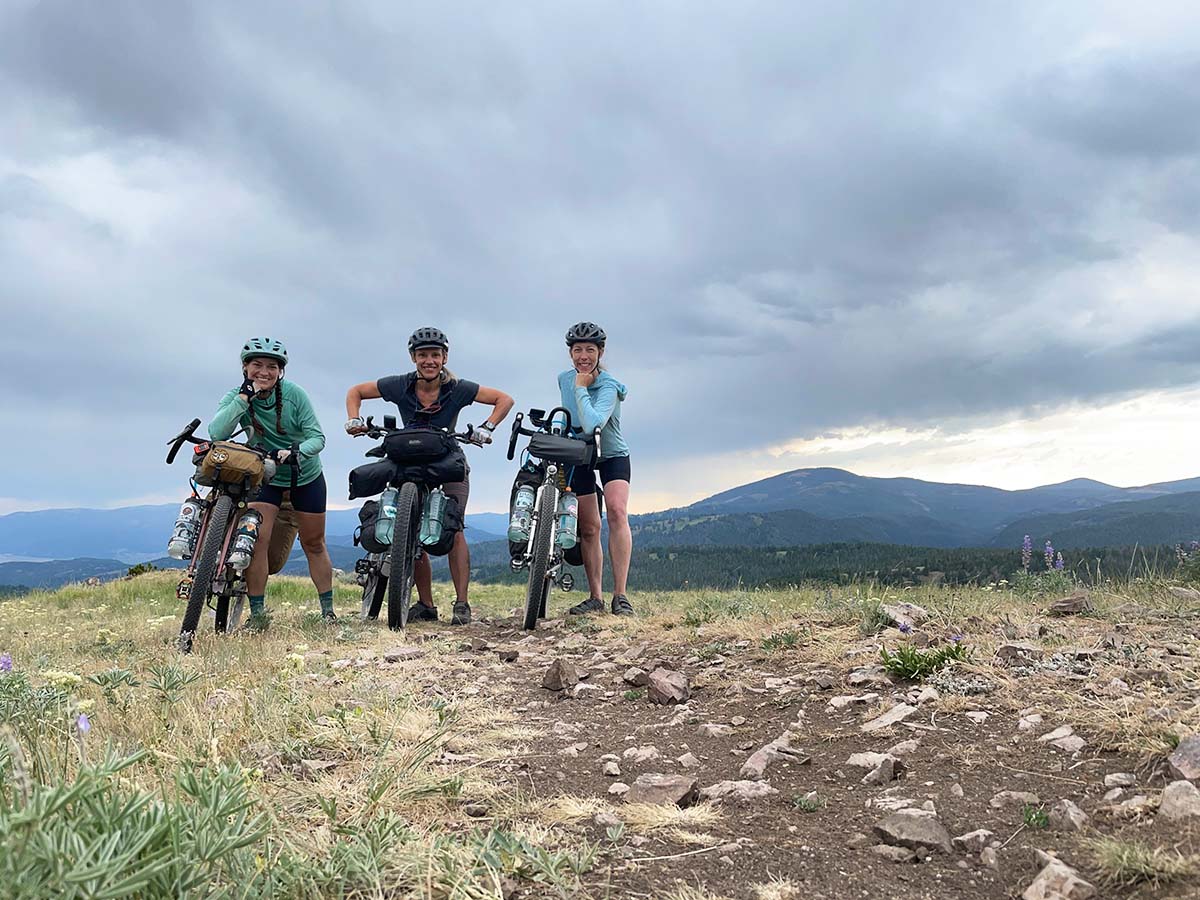
Time & Pace
Pak: It took us about 2.5 months (~75 days) to get to the border of Canada. As the only experienced bikepacker on the trip, I severely underestimated the time it would take us to finish. I was expecting about a month and a half but our pace was slow as I was taking new cyclists and outdoor enthusiasts.
Alissa: Antelope Wells to Banff took me 65 days, including nine non-riding days to rest along the way and visit with family in Jackson, Wyoming where my husband joined me. It was a comfortable pace, not too fast and not too slow. I enjoyed the freedom to linger in the nicest campsites and towns, hang out with other cyclists, and wait out the occasional storm, but also felt ready to be done after two months.
Irena & Sarah: 39 days. We were happy with the pace because it allowed us to have a mix of longer days, a couple of shorter days, and one full rest day. On the one hand, we enjoy pushing ourselves and know that we could probably have gone faster. On the other hand, things like saddle sores have their own agenda. Also, beers in the afternoon sun are a beautiful thing.
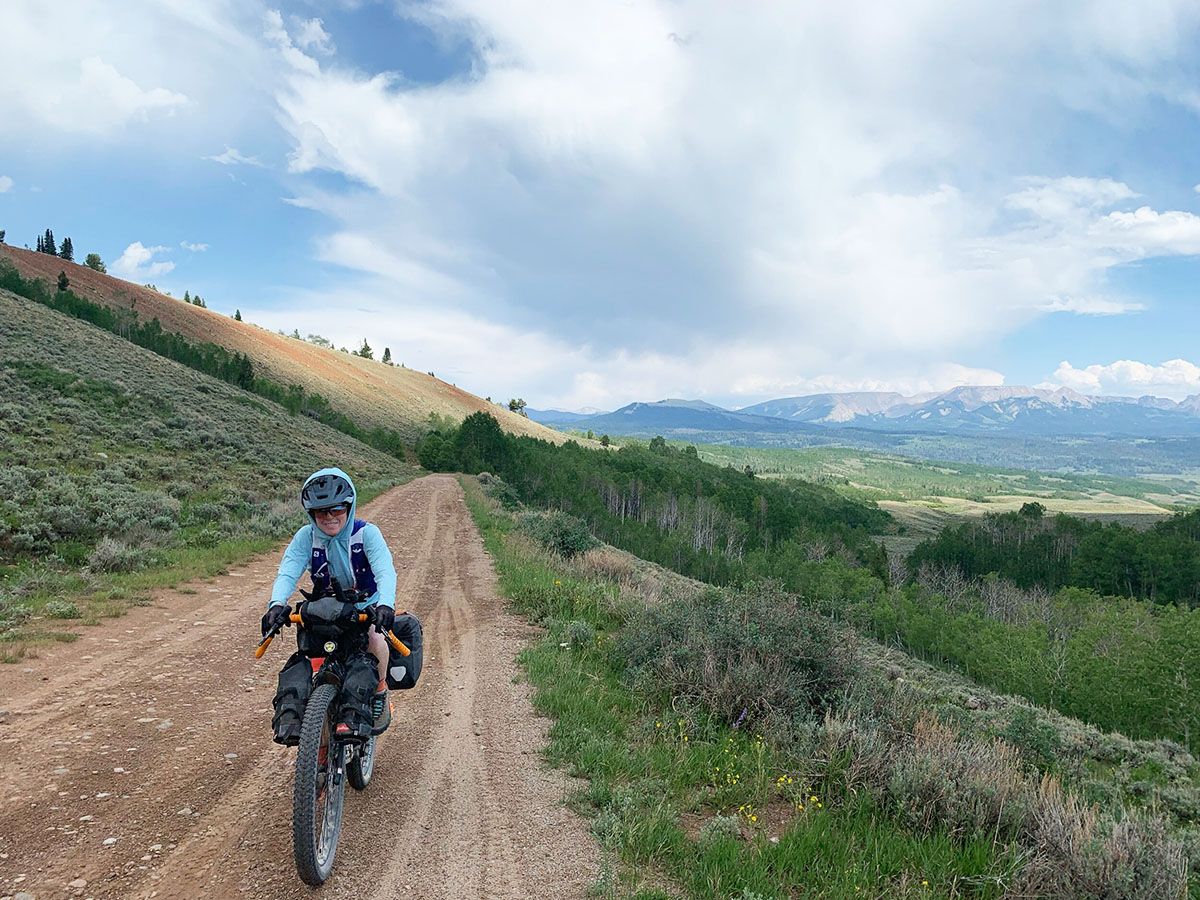
Scott: I rode for 32 days. I did not rush and rode between 55 and 60 miles a day with only a few higher mileage days of 80-90 miles in the mix. This was a comfortable amount of mileage for me.
Mia: It took me 45 days to ride from border to border. At times, I felt rushed, and at other times, I felt like I had all the time in the world. I was, however, on a strict schedule. If I were to do it again, I would take two more weeks and do some hiking along the trail and take more breaks.
Deb & Tom: 52 days border to border. We averaged 53 miles a day and took just two rest days on the GDMBR. We were happy with that pace and wouldn’t have changed anything, except maybe the stubborn cattle we encountered.
Alyssa & Friends: 40 days border to border. I had to be back at work within exactly six weeks, so we didn’t have much flexibility in our schedule which caused us some tension. Stephanie was adamant about reaching the border; Megan and I were not. Our one big knock-down-drag-out fight as a group was about our pace. We had to keep a close eye on our daily mileage, which meant that we sometimes had to ride when we didn’t want to, and we couldn’t meander. We took exactly one zero (rest days) and just one or two nearos. Six weeks was workable! It would have been nice to have seven.
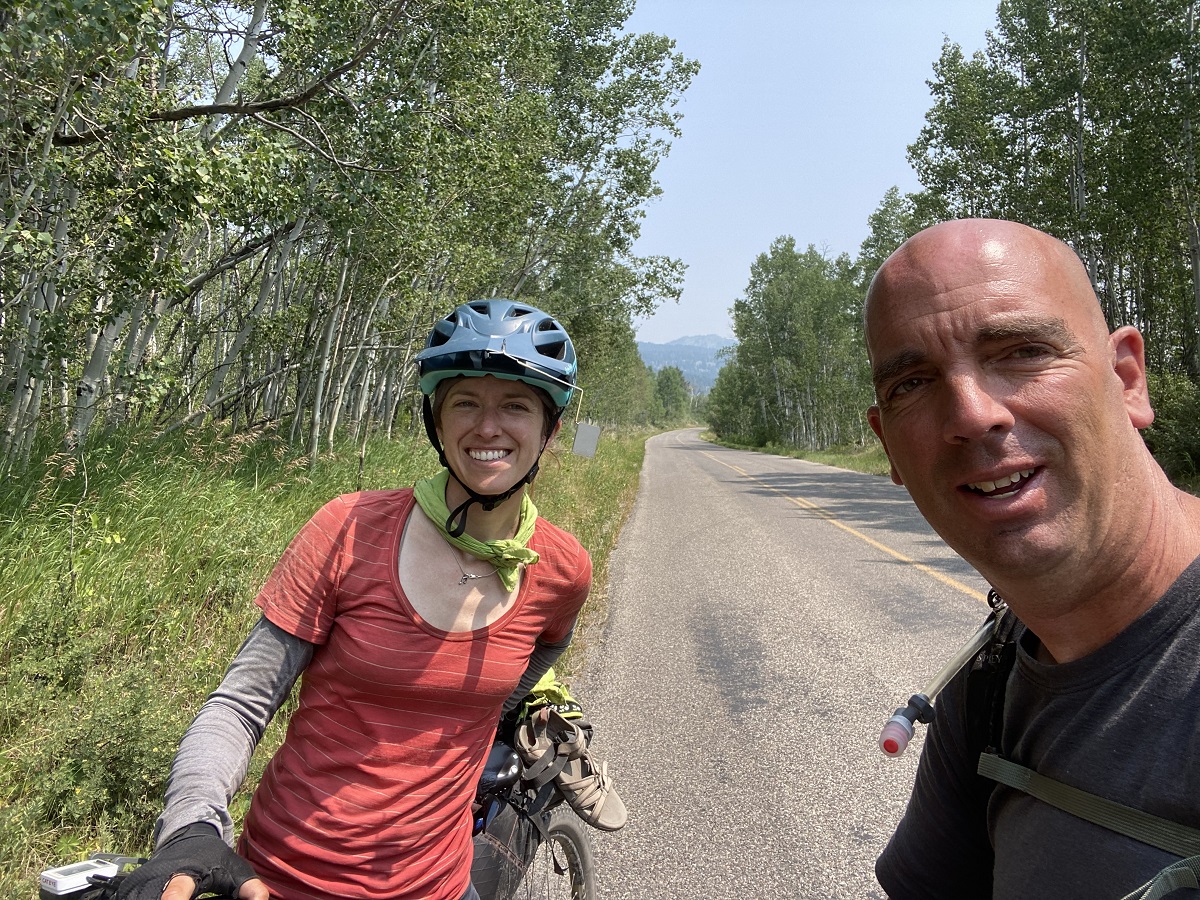
Most Important Gear
Pak: Camera equipment! With our already heavy steeds, we added an additional 20ish pounds with cameras, lenses, a drone, batteries, and accessories.
Alissa: I usually aim to pack everything I need and need everything I pack, so by definition everything on my gear list was important. A few favorites: my Big Sky Soul freestanding tent, a small stuffable backpack for grocery runs and long water carries, and a Bike Peddler helmet mirror for the road sections.
Irena & Sarah: Our gear list is here. We both agree on one of the most important things: our sun hoodies! We wore one almost every day, rain or shine. We also each brought a Kula Cloth (aka pee cloth), and it turned out to be something we don’t know how we ever lived without. Irena brought rubber gloves which she used for cleaning her bike, and Sarah was jealous of them every single morning.
Scott: The Adventure Cycling maps are a must-have in my opinion. Whether you’re camping or using hotels, these maps have all the information you need and a brief history of each section as well. High quality items are a great security blanket.
Mia: My yellow dress! Wearing a dress really improved my mood on the trip. It was also a symbol, as there are not many women that ride mountain bikes, let alone bikepackers. I wanted to be recognized as a woman on the trail and I felt wearing a plain yellow dress was the best way possible. Additionally, the dress made so many people smile, and it helped me play an active role in representing that you don’t necessarily need to be decked head to toe in the newest and latest gear.
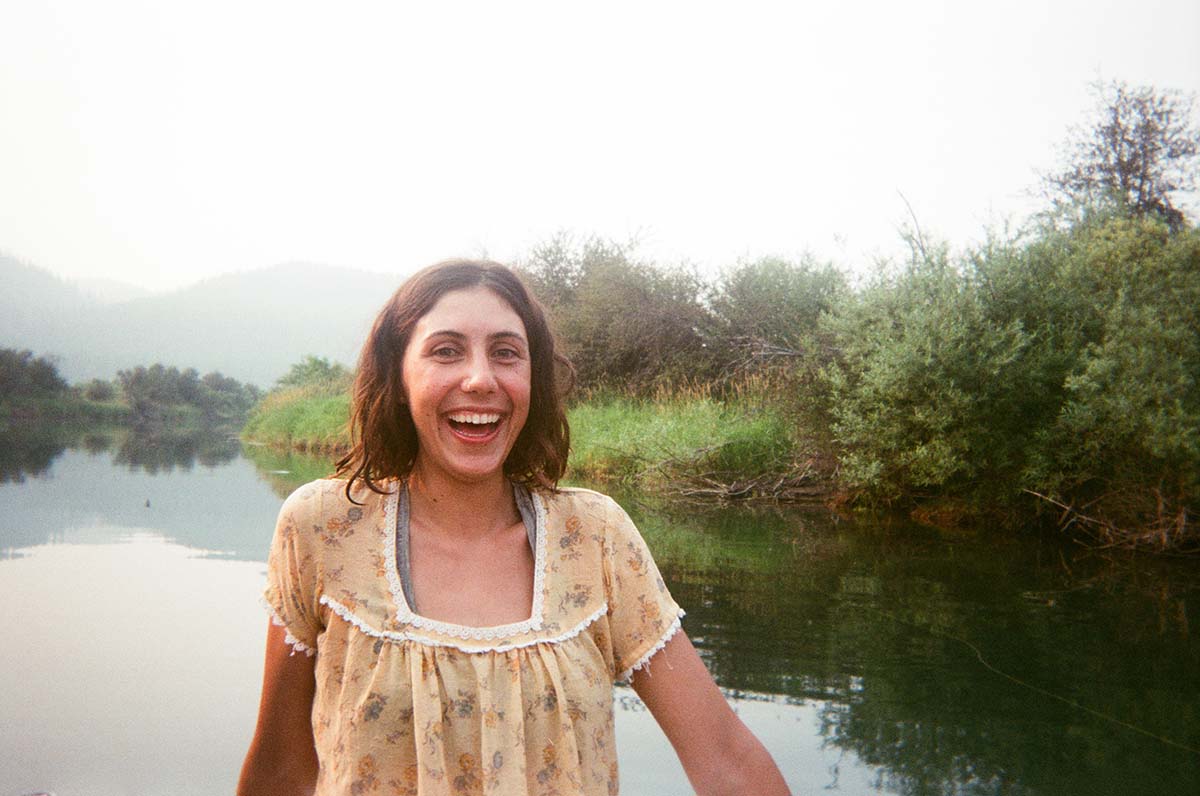
Deb & Tom: We chose not to take the kitchen — stove, cookware, etc. — to save weight and space, and we’ll do the same on our next bike tour. Both of us have very lightweight backpacks that we used a lot. For example, when riding through the Great Basin, we stored extra water in them. We used the backpacks and rope as bear bags to hoist food in trees in bear country while wild camping. Backpacks are also useful as laundry bags or shower bags when in town.
Alyssa & Friends: A chain breaker, spare quick links, and the knowledge of how to use them. Outside of Breckenridge, my chain jumped into the spokes and fully seized the wheel. A couple of links were so damaged that the only path forward was to remove them and shorten the chain. Thankfully, I had taken a backcountry bike maintenance class and had practiced breaking a chain. I was able to remove the damaged links so that we could make it to Elevation Bicycles in Breckenridge (please send our undying love to Pete). If we’d been somewhere more remote and hadn’t had the tool, spare part, and skill, we would have been pretty hosed.
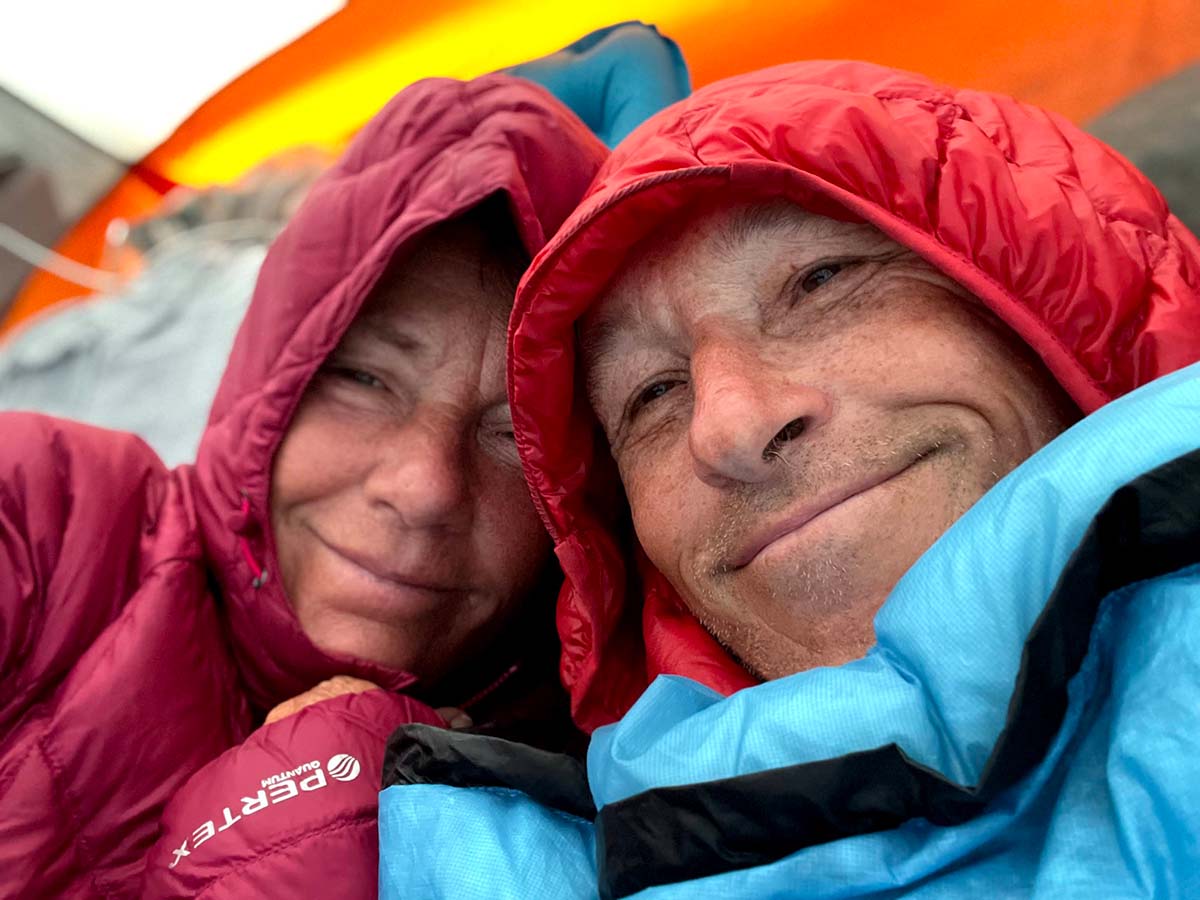
Favorite Campsites or Towns
Pak: One of the valleys of the Osier Mesa a few miles south of the New Mexico and Colorado border. It was such an idyllic valley to end up at after a long rainy day ascending the pass.
Alissa: I enjoyed so many lovely dispersed campsites on the GDMBR! My favorite areas included northern New Mexico, the higher-elevation parts of Colorado, and the Great Basin in Wyoming. Of course, after a few days out it’s nice to regroup in town. From a practical perspective, I liked towns that were small, walkable, and inexpensive: Grants, New Mexico; Del Norte, Colorado; and Rawlins, Wyoming come to mind. For ambiance and good vibes I especially liked Silver City, New Mexico, and Fernie, B.C. The Prairie Stage Stop in Grant, Montana was a welcome surprise with its cheap rooms and good food.
Irena & Sarah: One favorite campsite was between Hartsel and Salida, Colorado on beautiful serene public land, and another was near the Beaverhead Work Station in the Gila National Forest in New Mexico where we made friends with nearby grazing horses. Our favorite town was Silver City, New Mexico. It had great food and a wonderful hostel, and we had a delicious Mexican food dinner and margaritas.
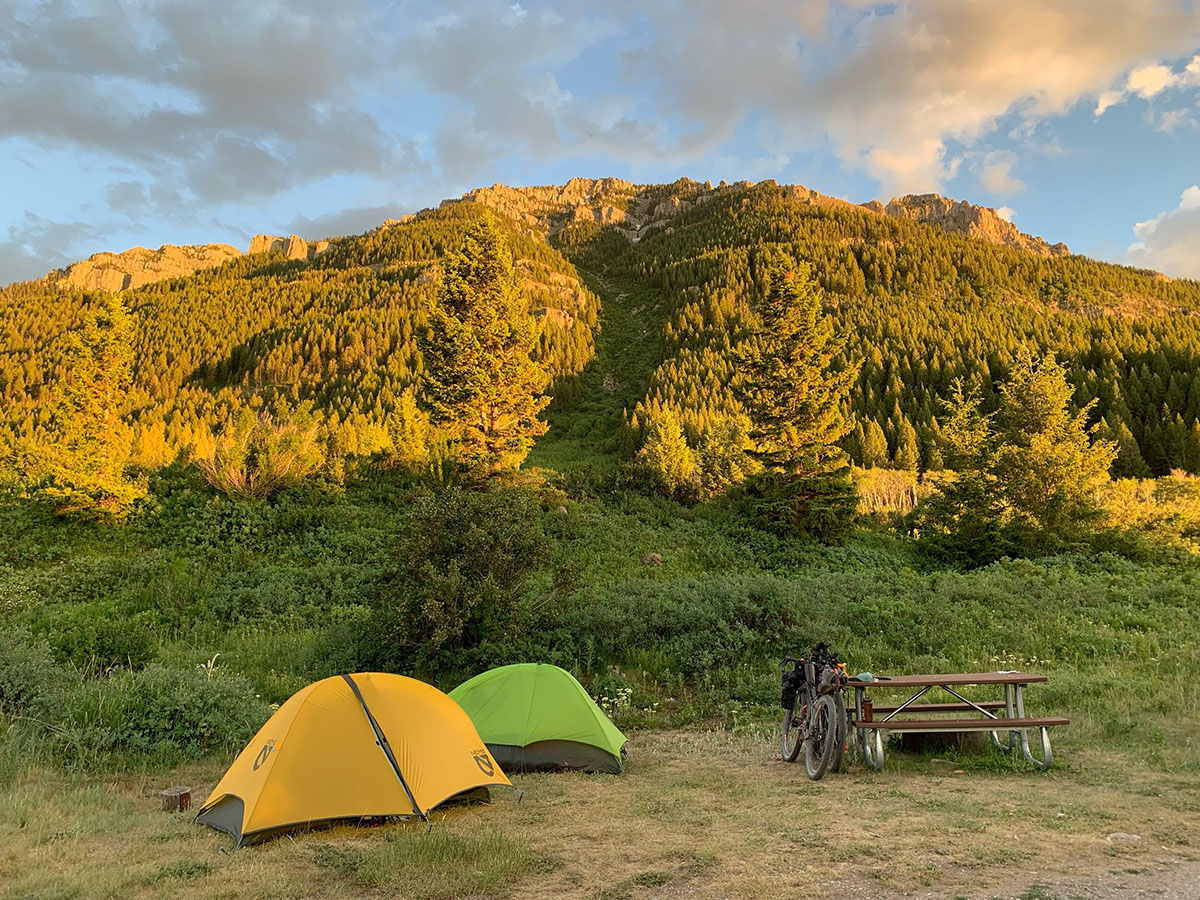
Scott: My favorite wild camping was in the Great Basin. I stayed at the Cow Camp area that had a patch of grass. During the night a pack of coyotes came through the campsite. They were loud but there were no issues with them. Pinedale, Wyoming was also excellent. I got a hotel there and went to a bar where I met more great people, including a cowgirl! I learned a lot about what they actually do and why — very interesting. She sent me a picture of her hand next to a grizzly print — very cool.
Mia: You gotta spend the night at the Toaster House in Pie Town! It’s a hiker-biker lodging, complete with food, a kitchen, a shower, and great conversations with the host and guests. The hike-bike-up campsites in the Tetons, while not free, are quite the catch since non-hiker-bikers have to reserve them up to a year in advance. Elkhorn Hot Springs in Montana had affordable rates that included breakfast, hot springs, and lodging.
Deb & Tom: The dispersed campsites were our favorites. We sought out remote sites at elevation and were seldom disappointed.
Tom’s Campsites of Note:
- Red Meadow Lake, Montana: lots of mosquitoes but loved bathing in the lake after a high mileage, high elevation day
- Holland Lake Lodge, Montana: owner told us about walk-in bikepacking sites near the lodge
- Camping in the backyard of the saloon during biker week in Lincoln, Montana
- Camping near Wise River, Montana, with ashes falling on our tent from local forest fire. Definitely memorable.
Alyssa & Friends: On our second night, we noticed on our Adventure Cycling maps a “Cyclist Only Lodging” icon just outside Whitefish, Montana. It was Tom Arnone’s lawn! Tom offered us picnic tables and lawn chairs, a cooler of sodas, outdoor charging stations, access to his bathroom, and a big field to camp on. We were bowled over by the unexpected generosity. After that, we did everything we could to stop at every “Cyclist Only Lodging” icon on the maps.
By seeking out the “Cyclist Only Lodging” spots, we met some of the most gracious humans — GDMBR-famous angels like Barbara and John at the Llama Ranch, Kirsten at Brush Mountain Ranch, and Nita at the Toaster House, but also so many lovely, less-well-known angels who pointed at a hose, a powerstrip, and a patch of dirt and said, “make yourselves at home.”
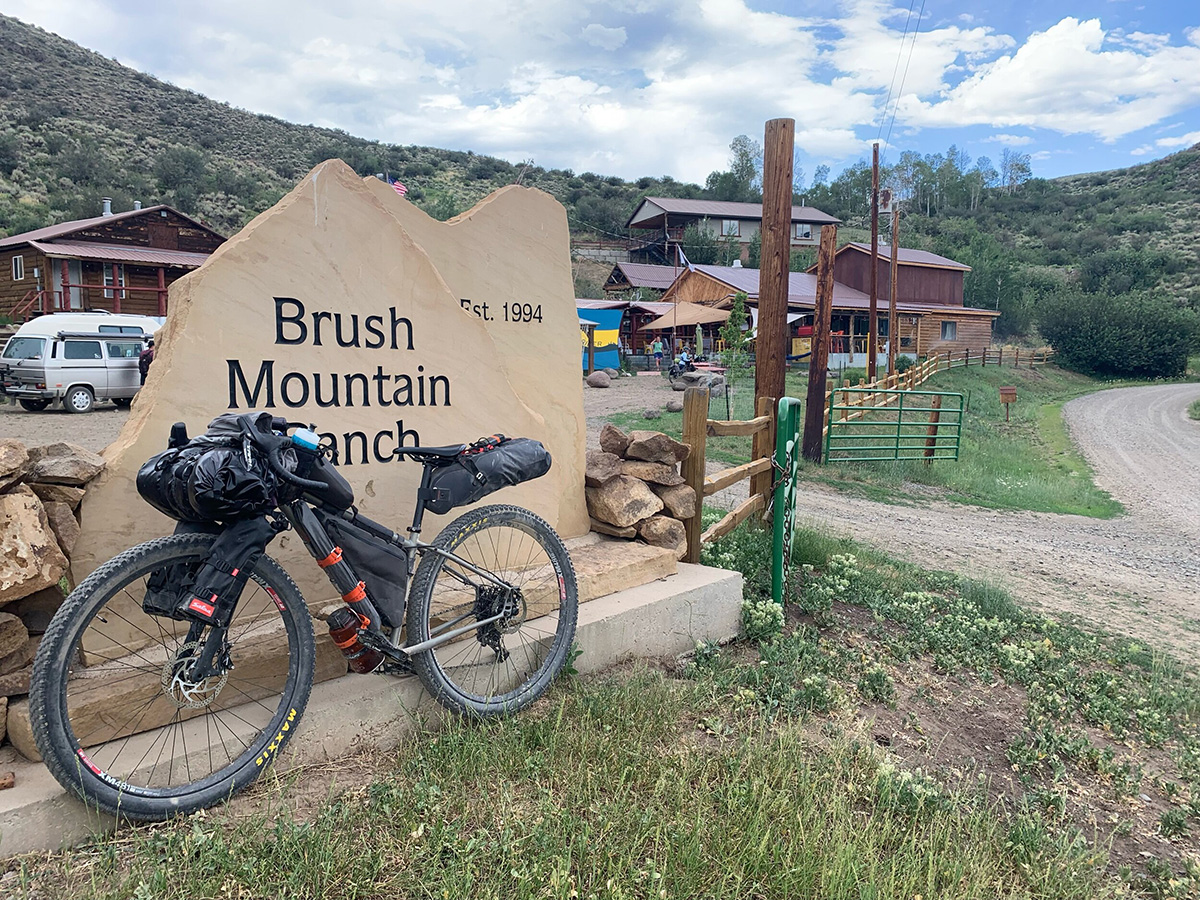
Memorable Stops or Side Trips
Pak: Our side trip to the Gila Hot Springs in New Mexico
Alissa: A few hundred miles past the halfway point I detoured into Jackson, Wyoming to meet up with my husband. We stayed with family there for three days while I rested and we got his bike ready to roll. Jackson is too far off route for most cyclists to make the trip, but for those who do, the scenic bike path through Teton National Park is lovely.
Irena & Sarah: Yes! We encountered a terrible thunderstorm with flash floods in northern New Mexico with no shelter in sight. We finally came upon a small compound of buildings which, upon finding an unlocked door, turned out to be a [warm and dry] Sunday school building so we sheepishly but gratefully slept on the floor. Read more about that day here and another memorable stop here.
Scott: I stopped in Grant, Montana to get some lunch at about 2:00 PM. The restaurant was closed! A few minutes later, a lady came out and told me to come in, gave me a peach pie, and a coke, and said I could rest there while she ran some errands. Hospitality at its finest! I ended up eating dinner there and staying the night, got a big breakfast in the morning, and headed out.
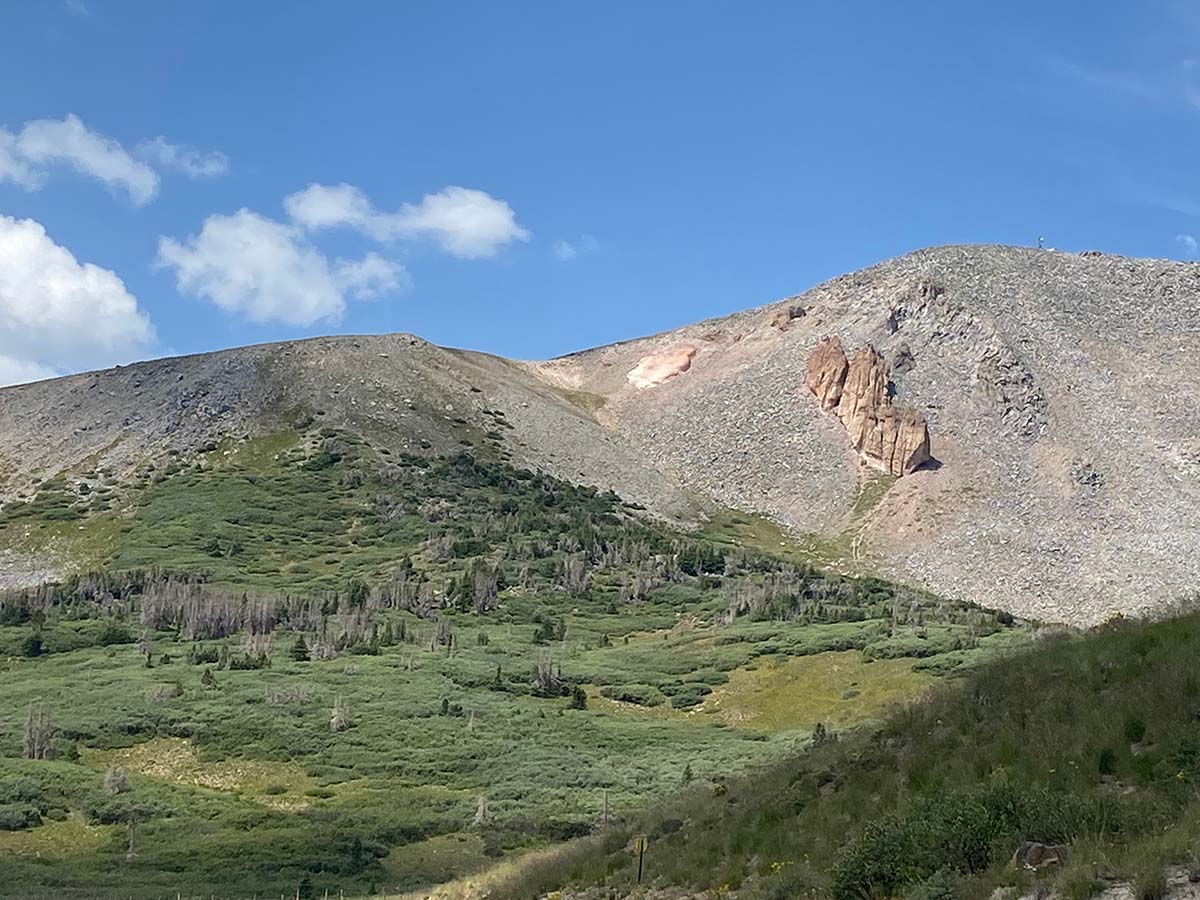
Mia: While I didn’t do any side trips, I really enjoyed digging up crystals in Crystal Park, a legal dig site for crystals put on by Montana State Parks. If I had known about it in advance, I would have spent the night at Brooks Lake, a gorgeous lake near the Tetons with far fewer people compared to the Tetons National Park.
Alyssa & Friends: Six miles outside Silver City, New Mexico, we got caught in torrential rain. The closest shelter was the porch of a saloon — they opened for drinks just a few minutes after the rain started. We took it as a sign. While we sat at the bar waiting out the rain, I struck up a conversation with the couple next to us. Within five minutes and without my asking, Anne and Abby had handed me the keys to their empty duplex. “Fresh sheets on the beds and towels in the bathrooms; stay as long as you’d like!” We weren’t planning to spend 24 hours in Silver City, but we were ahead of schedule and had the incredible gift of a homebase. We had such a leisurely day the next day: coffee, brunch, thrift shopping, ice cream, showers, naps, late lunch, resupply; rolled out of town at 5:00 PM. Thank you, Anne and Abby.
Most Difficult Sections
Pak: These would definitely have to be the rocky sections in Colorado and New Mexico, in particular, right before Brush Mountain Lodge. Traversing super gnarly large rocks without front suspension sucked.
Alissa: Physically, parts of northern New Mexico were hard for me — quite steep and rocky, my bike was heavy with food and water, and my body was still getting in shape. Mentally, parts of Montana were the hardest. Some sections were monotonous green tunnels and the best views were often clouded by wildfire smoke. Fortunately, the air cleared just as we reached Canada, allowing us to fully enjoy our last few days on the route and the gorgeous views of the Canadian Rockies.
Irena & Sarah: Two sections come to mind. The climb out of Radium heading toward Kremmling, Colorado, was long, hot, and dry with vicious mosquitoes and heavy weekend traffic without much of a shoulder. By far the longest and most challenging day was the ride from Abiquiu to Cuba, New Mexico. Hot, dry conditions and bumpy, technical, nearly-unrideable surface along with carrying extra food and water due to lack of services made for a very difficult day. Paradoxically, we had expected the Great Basin to be the worst part of the route but we lucked out with no rain and little wind and ended up enjoying the sun-baked, rolling terrain.
Scott: Montana was hard because it was my first time bikepacking, and the climbs seemed to go on forever. I’m from Ohio; we don’t have mountains. I quickly learned to pace myself and learned it was OK to hike a bike sometimes. I mistakenly thought the downhills would be fast and easy. Fast was correct, but doing two- to three-mile downhills was hard on my hands. New Mexico was hard due to the heat, monsoons, and rough terrain.
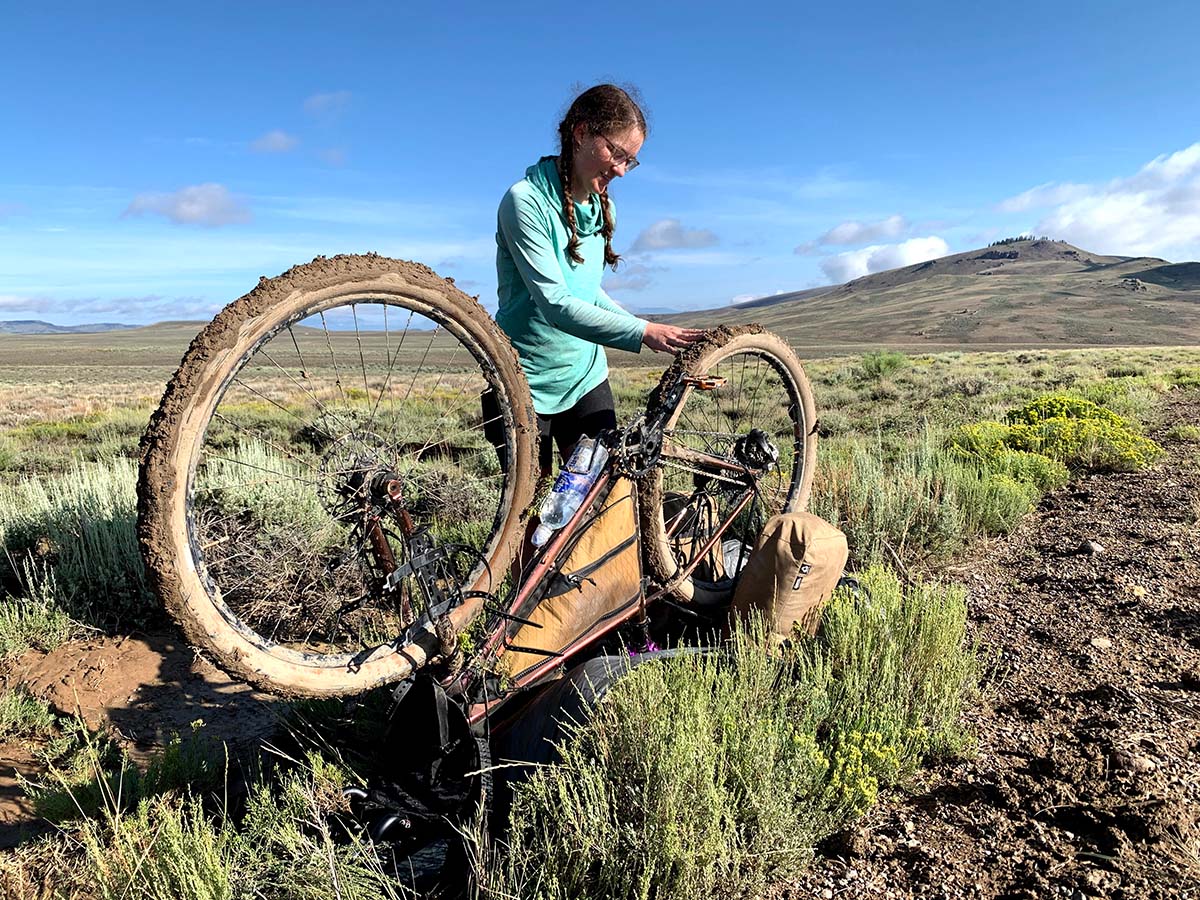
Mia: Everyone hypes up the Great Basin in Wyoming or Fleecer Ridge in Montana as being quite difficult. True but the difficulties of these are common knowledge. The most difficult part for me was the Lava Mountain pass. I was able to ride a lot of really difficult chunky stuff on the Divide but this pass was just impossible. You would have to be a shredder to ride that pass. It was steep with tons of downed trees, sand, and boulders. Since it isn’t common knowledge, I didn’t account for it in my timing, and it took me longer than I would have liked.
Deb & Tom: The Great Basin was particularly challenging. It wasn’t the elevation, but the riding conditions which happened to serve up two very hot days with a side of headwinds. Although we were carrying extra water, we were careful not to drink too much so as not to run out. The water we did have was HOT and not thirst-quenching. I’d have given anything for ice water.
Then on our ride toward Pie Town, we experienced a downpour and the infamous peanut butter mud. It was on our bike drivetrains, shoes, just everything, and we couldn’t go more than a few yards until we had to stop and scrape it off.
Alyssa & Friends: My nemeses are baby heads (rock chunks about the size of a baby’s head) and peanut butter mud. There are a couple of stretches — Granite Butte, Lava Mountain, Fleecer Ridge — that I had to hike-a-bike but never more than two or three miles at a time.
Hardest and Best Parts of the Ride
Pak: As an experienced outdoor guide, this was by far the most emotionally exhausting trip I’ve ever led. I was always on the lookout for the well-being and safety of my little brother and best friend, which was very draining. The best part was being able to share this entire experience with two brothers, one of blood and the other of time.
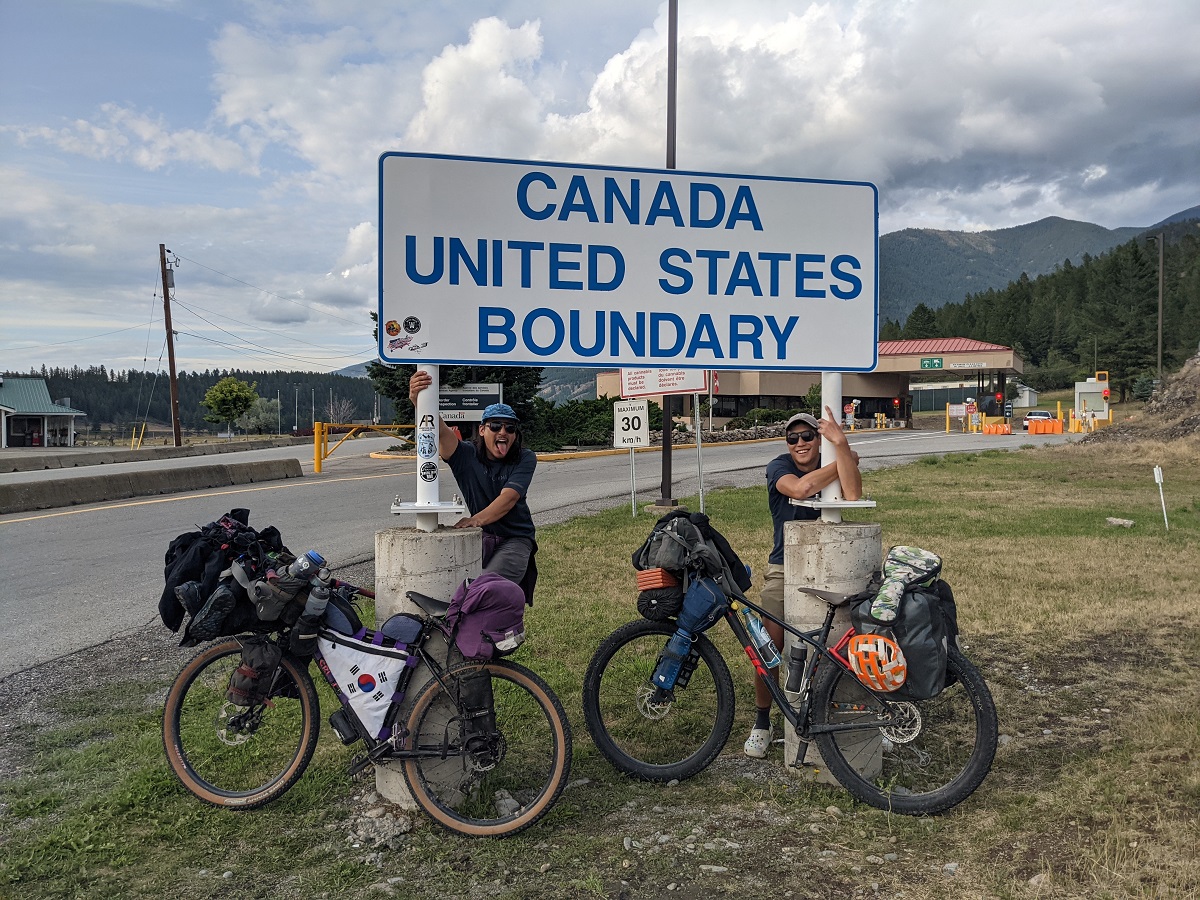
Alissa: The greatest challenge of the GDMBR for me was simply its length. Finding the motivation to stay excited and curious while riding day after day after day was sometimes challenging.
Connecting with other riders has been the best! It’s a unique experience to meet so many fellow cyclists way out in the middle of nowhere. Thanks to its legendary status and popularity, the GDMBR continues to offer common ground whenever I’m chatting with other bikepackers.
Irena & Sarah: Sarah felt that the hardest part was the first two minutes of every day after the alarm went off, while she tried to rouse her tired mind and body to leave the cozy warmth of her sleeping bag. Irena felt that managing the relationship between the saddle, padded bike shorts, and all her private bits required lots of lubing and constant attention.
They both felt the best part about riding the GDMBR was the gift of being coaxed into the present moment by necessity, witnessing the everyday anxieties of daily life dissolve with each passing mile.
Scott: Taking care of your body and getting the proper nutrition can be difficult for weeks at a time. Sometimes all you can find to eat are foods from a convenience store — usually not the most nutritious.
The best part for me was the absolutely phenomenal scenery. I tried hard to plan my rides so that I could sit at the top of a pass somewhere and have my lunch. The wildlife and the scenery were breathtaking.
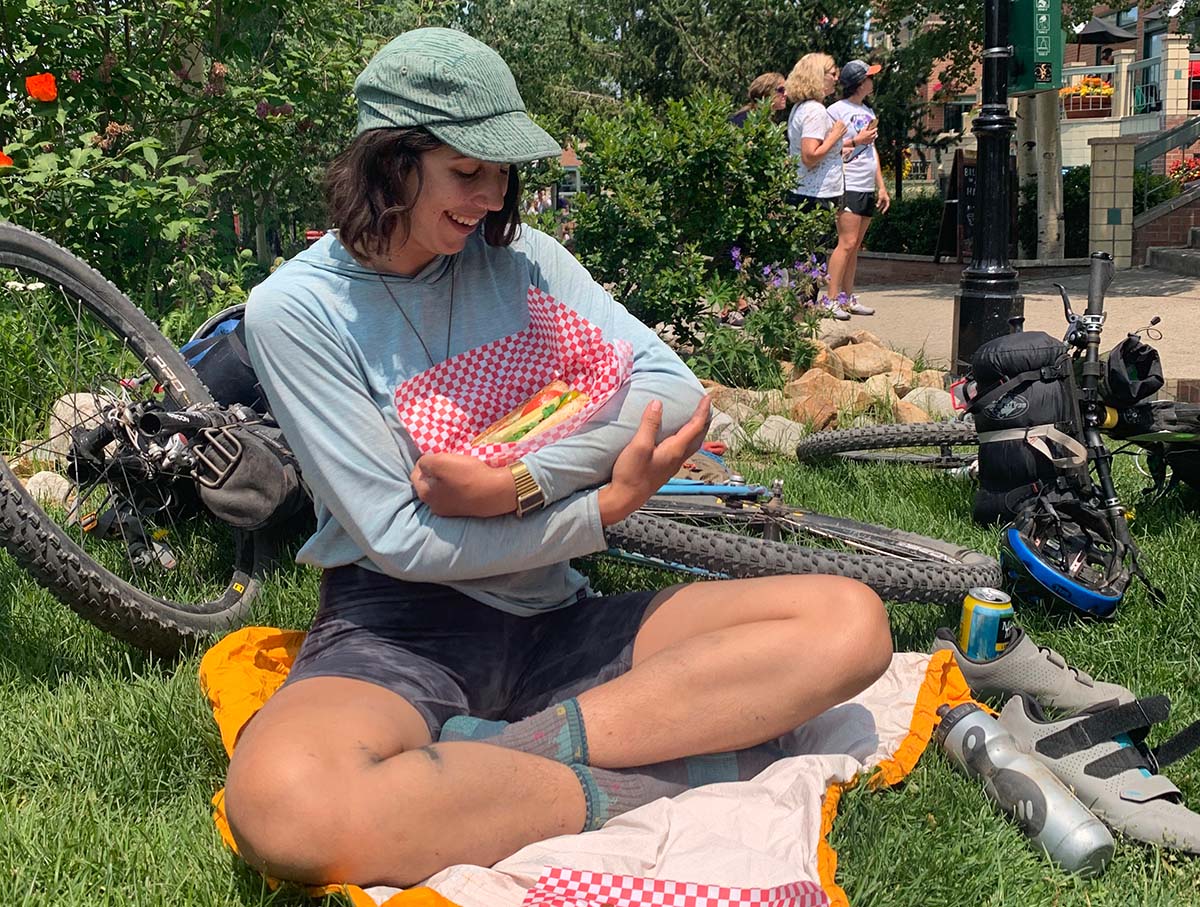
Mia: My bike didn’t fit me well so I had a lot of strain on my knees. At one point I had one foot in the clip and the other one hanging off the bike, pedaling to the next town with one foot. Also, the fires. When it was smokey, my lungs ached and the views were gone. I would definitely recommend planning around the fire season (if possible).
I think one of the peak moments of my entire life was on the single track section south of Holland Lake in Montana. It was an incredibly flowy trail with so many huckleberries and just a spectacular view.
Deb: The elevation and road surface were particularly challenging as there just isn’t any terrain in central Indiana on which to prepare for an extended ride like the GDMBR. However, as the ride progressed, my ability to handle the elevation and road surface improved! As we knocked off mountain passes, we’d stop and celebrate.
Tom: In the beginning, the hardest part was mental for me. We learned a fellow cyclist was killed by a grizzly bear just a couple days ahead of us. As we were riding through grizzly habitat and camping at night, keeping a positive attitude and trying not to worry was at times difficult as was knowing there were long climbs ahead of us. The best part was riding off the grid for so many days.
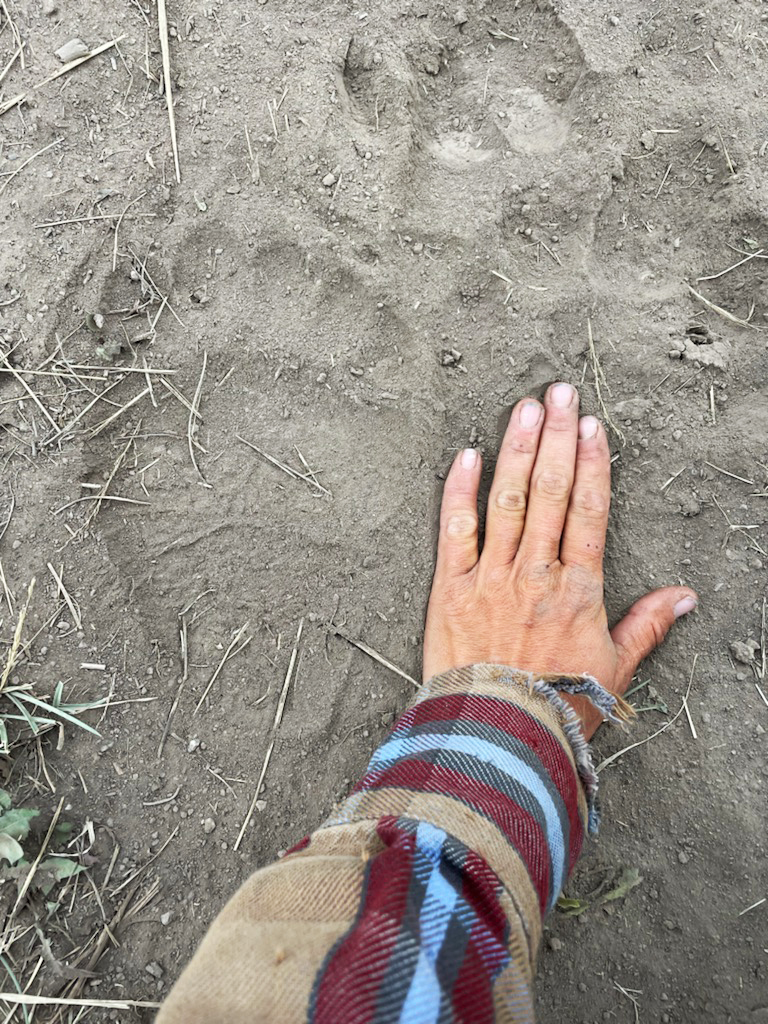
Alyssa & Friends: The hardest part was figuring out how to get enough time off of work. Really! Everything after that is just one day, one moment at a time.
I am grateful for every person we met along the way. I am grateful for every sunrise and sunset we saw; for the incredible majesty of the landscape we experienced. And I am grateful for every snack I ate. There’s almost nothing better than eating a rest stop cookie alone on the side of a gravel road in the middle of nowhere.
Advice for Readers & Riders
Pak: Go slow to go fast.
Alissa: First, go for it! As long as you know what you’re signing up for — a long mostly gravel route with little pavement and very little singletrack — you won’t regret it.
Second, don’t stress about planning every detail beforehand. The GDMBR is incredibly well-documented, and it can feel like you’re supposed to memorize every detail before your wheels ever touch the dirt. Planning can certainly be part of the fun, but changing conditions have a way of making even the most careful plans obsolete. I found it helpful to understand the flow of the route in broad terms from books, blogs, and podcasts, and then plan details like water, food, and camping just a couple days ahead using the GPX data.
Irena & Sarah: Don’t let fear be the thing that stops you from having the faith in yourself to give it a shot. Make sure ahead of time that you are comfortable with your bike and gear (i.e. don’t make big changes right before the trip). Make friends with feeling uncomfortable. You may discover wells of strength within yourself. And the kindness and generosity of people along the way just might melt your heart.
Scott: If you get the opportunity to do this ride, absolutely take advantage, and do it. There will be many obstacles, hard days in the saddle, weather, logistics, and mechanicals … but I guarantee it will all be worth it.
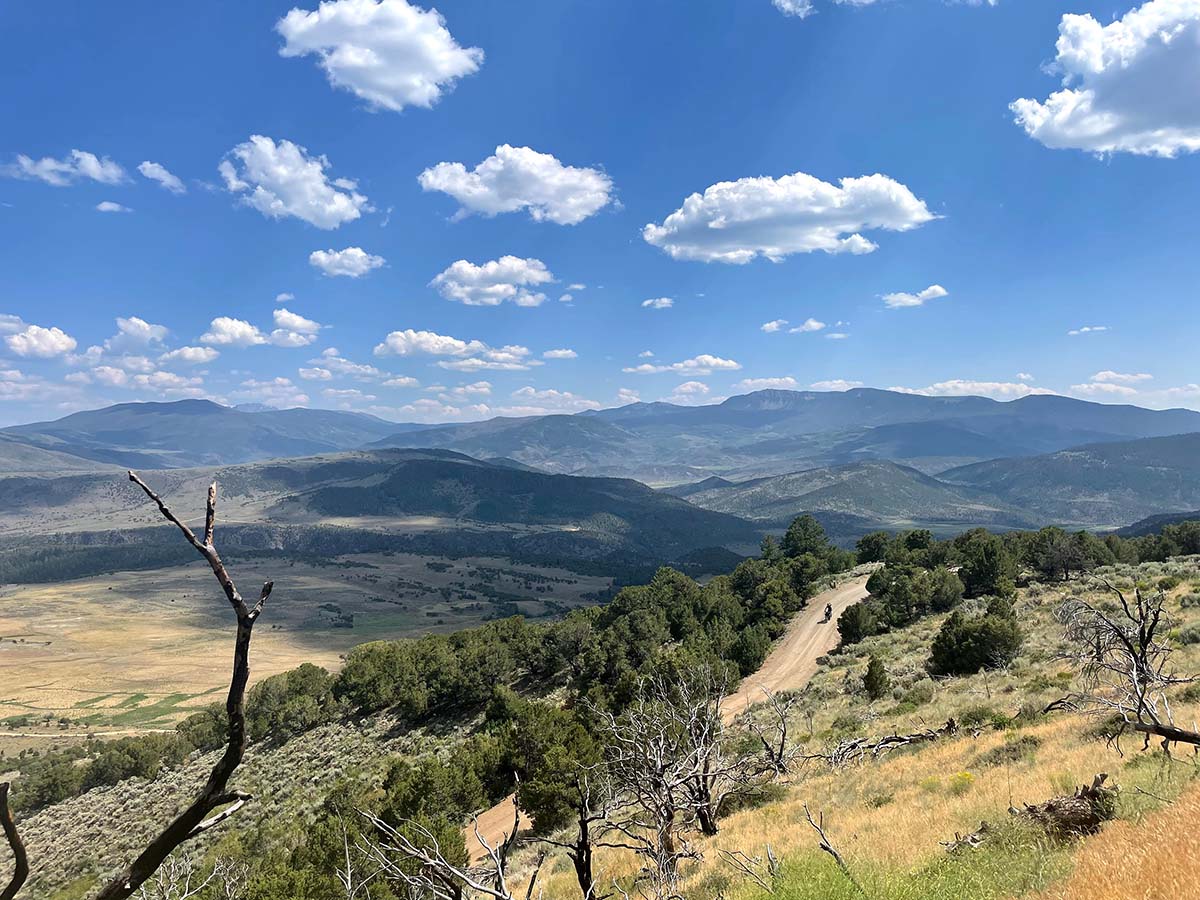
Mia: Don’t let the lack of company be a limiting factor. Going alone was amazing and I would highly recommend it. It was a great chance to learn more about myself, and more people will approach and help you. Bring aero bars, even if they are cheap ones. The headwinds can get quite intense, and the aero bars will help save your energy when you need it most. For reference, two people I met on the trail said they regretted not bringing them. Also, pick the huckleberries in northern Montana. They are delicious.
Deb & Tom: Understand that it’s YOUR ride and don’t compare your ride to that of others. Comparison is the thief of joy. For many of us, we’ll ride the Great Divide only once and then move on to other adventures. So ride your own ride and allow the Great Divide to teach you what it intends for you to learn. It will be different for every rider.
Alyssa & Friends: My dad says, “If everything goes right, you won’t remember it.”
Riding through the Great Basin, we got caught in a storm — thunder and lightning directly overhead in a landscape where we were the tallest thing around. There was nothing we could do except lie down in a ditch and wait for it to pass. If you let it, that kind of moment can really get to you. Instead, I try to live in that little slice of chaos; try to relish feeling uncomfortable; try to find joy in the absurdity of the situation. If you can really lean into the joy of things going wrong, then no matter what happens you’ll have a great time.
For more, check out these helpful links:


